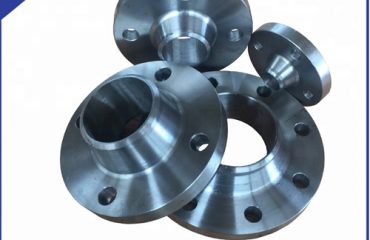
Flange is a commonly used part in engineering, covering a wide range of fields, because it is an indispensable part of piping design, piping fittings and valves. The difference between standard flanges and non-standard flanges is mainly reflected in the following aspects:
- Flange specifications
The national standard flange is a general-purpose component. The outer diameter, screw hole and thickness of the flange of various specifications are fixed, and the size is processed according to the national standard HG/T 20592-2009. The safety factor of the national standard flange in the production and processing is Also consider when connecting flanges; after all, flange connection will cause wrong openings and holes due to factors such as connection ports, gaskets, bolts, etc. Once wrong openings and wrong holes occur, it is easy to cause media leakage. Therefore, the thickness of blue using the national standard method has a larger safety margin.
Non-standard flanges are usually designed by companies or individuals to save materials or obtain materials on site. Therefore, the specifications of non-standard flanges are usually smaller and finer than national standard flanges; save materials and use scrap steel or scrap steel to process flanges. Usually, this kind of steel is a waste material that does not meet the chemical composition and mechanical properties. After the flange is connected, the produced flange cannot be welded to the steel pipe, otherwise the steel itself will have cracks, pores, etc. will also leak after welding; some methods The flange manufacturer also changed the sealing surface form of the flange, such as using O-rings instead of the usual convex, concave and full plane (FF) seals and face shapes previously used.
- Flange applications
The types of national standard flanges include flat welding flanges, threaded flanges, neck flanges, butt welding flanges, integral flanges, socket flanges and blind plates, etc.; these national standard flanges are used in actual methods. The flange connection is convenient and can withstand greater pressure. Therefore, flange connections are widely used in industrial pipelines.
Non-standard flanges are not suitable for many occasions. For example, the working pressure of the equipment gas cylinder flange is only 0.3MPA. If you don’t think you need to use the 0.6MPA national standard flange, you can design a small and thin non-standard flange yourself. However, when designing non-standard flanges, cost must be considered, otherwise it is best to use national standard flanges.
 Language
Language Espanol
Espanol English
English Italian
Italian عربى
عربى
 Skype: chinamaker99
Skype: chinamaker99  Tel: 86-316-5120812
Tel: 86-316-5120812 Email:
Email:  Whatsapp:
Whatsapp: 